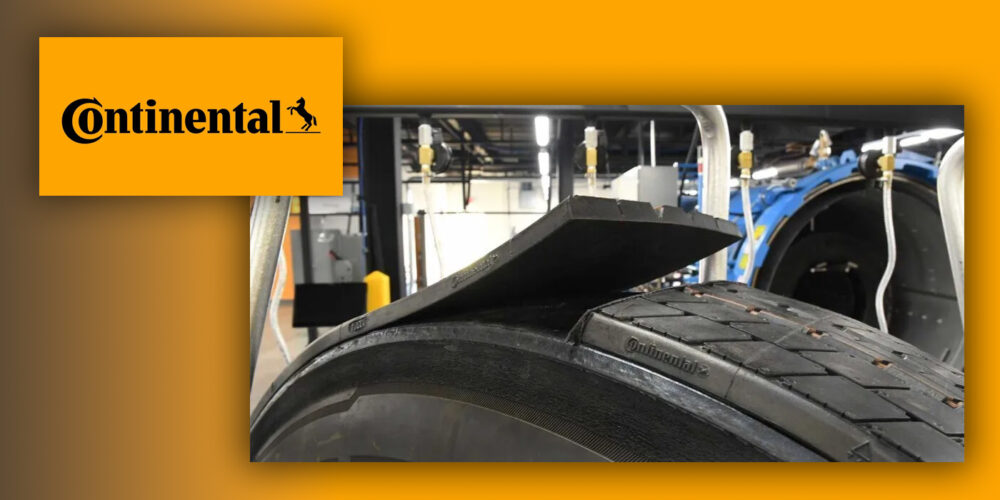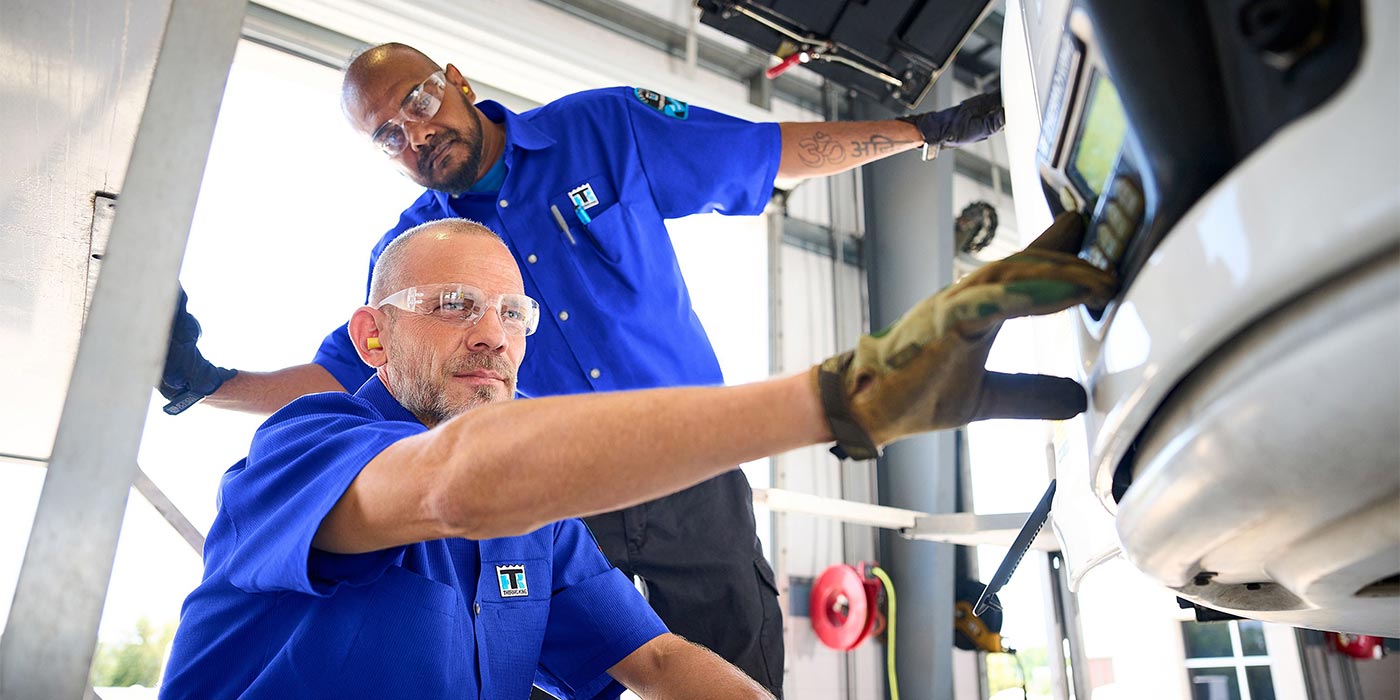Cleaner air. A better future for our children. Conservation of resources. Meeting regulation standards! You’ve heard it all before. Fleet managers want to be more sustainable too, but for someone running a fleet of trucks, you know being more sustainable typically comes at a cost. Instead of hearing those advantages, you hear: “Another trip to the bank. Cash register noises. We’re going into the red. My family will starve!”
But what if being more sustainable doesn’t cost an arm and a leg? What if, in fact, being more sustainable could mean putting more money in your pocket?
Most fleets aren’t ready to take that leap toward investing in electric trucks, the metaphorical giant neon sign of sustainable trucking, quite yet. But the majority of those fleets can still take steps that will save them money while at the same time make their current diesel trucks more efficient and thus more sustainable.
Start with a used oil analysis
It’s hard to know where you’re going if you don’t know where you’ve been. A used oil analysis – done in collaboration with a trusted lubricant expert and in agreement with the OEM – will help identify where a fleet can enhance its sustainability efforts, says Darryl Purificati, OEM technical liaison at HollyFrontier Lubricants and Specialties, which includes the Petro-Canada Lubricants brand.
“Incorporating a used oil analysis program into a maintenance schedule can provide the data to help individual vehicles operate at an optimal level, support extending oil drain intervals and keep the fleet on the road for longer between scheduled maintenance,” Purificati says. “This will spot any mechanical issues before they are too serious or expensive to repair, helping to prevent further damage to the engine’s internal workings and provide an evidence base to safely extend oil drain intervals.”
Oil analysis will highlight the condition of both the application and selected lubricant. This is especially helpful when it comes to drain interval, adds Ken Tyger, national director of gas recovery systems and PennGrade 1 consultant at D-A Lubricant Co.
“It not only gives you a nice snapshot of the health of the oil at any given time, but also the health of the hardware,” he says. “We have customers who rely heavily on our feedback to recognize that they might have a precursor for a coolant issue, or that their viscosity is too high due to overextended drain. And, the analytical reports provided are an extremely reliable tool for the overall maintenance and longevity of the hardware.”
Purificati also recommends reviewing the engine oil recommendations in the OEM manual, which will detail whether it’s suitable to use lower viscosity engine oils. Moving from an SAE 15W-40 to a 10W-30 heavy-duty engine oil, for example, can achieve up to a 1% fuel economy savings, Purificati says. The OEM manual will also highlight opportunities to use lubricants with fuel economy benefits elsewhere on the vehicle.
Switch to synthetic lubricants
According to Shawn Whitacre, senior staff engineer at Chevron, synthetic base oils are an important building block for lubricant companies seeking to create high-performance finished fluids, and are oftentimes a necessity when formulating a low-viscosity oil.
“The most critical thing is that, at the end of the day, it’s all about that combination of having a good base oil and a good additive system that’s married together in an elegant way that gets you to a finished fluid that meets the entirety of the end-user’s needs,” he says. “That’s not only the performance advantage, but it’s being able to deliver those advantages at a good price point.”
Oil companies tend to agree that as long as the fleet is following OEM guidelines, swapping to synthetic lubricants will likely bring about fuel economy savings versus using alternative products.
“With synthetic products at lower viscosity grades such as 5W-40s or 5W-30s, a fleet can realize fuel savings if they were previously using a heavier grade like 15W-40. Similarly, using a synthetic gear oil like 75W-90 will bring fuel economy savings versus conventional products,” says Jeff Torkelson, senior technical director for commercial and industrial lubricants at Valvoline. “You can always work with your lube supplier to help you identify the right fluid for your fleet.”
Selda Gunsel, vice president of global commercial technology at Shell, says using Shell Rotella T6 5W-40 synthetic heavy-duty engine oil offers enhanced fuel economy capability of 1.5% when compared to 15W-40 oils, without compromising engine protection or durability.
She adds a fleet might have an opportunity to extend oil drain intervals by using a synthetic product.
“Using a synthetic engine oil can allow truck operators to extend their oil drains beyond typical manufacturer recommended oil drain intervals,” she says. “So, using our advanced synthetic lubricants can allow our customers to get more life out of their lubricants than with conventional oils. This means less oil used over the life of the vehicle and less waste oil.”
Yet another benefit of using synthetic lubricants is that they can help provide better low-temperature properties, Petro-Canada Lubricants’ Purificati says. He says in a cold climate, this allows for better flow and protection on start and warm-up; this means less work is required from the engine, which improves the overall health of the vehicle.
Explore whether CK-4 or FA-4 oils can be used
Chevron’s Whitacre says he finds many fleets still aren’t taking advantage of fuel economy benefits that can be gained by using lower-viscosity API CK-4 or API FA-4 oils introduced in 2016. While the FA-4 category can offer many newer trucks improved performance and fuel economy gains, some fleets aren’t aware or comfortable filling their trucks with lubricants in this category. In fact, he says, there’s a sizeable fraction of trucks coming off the assembly line today that are pre-filled with FA-4 oils, only to find themselves in the hands of an end-user who switches to CK-4 with the first oil change.
“Now, there’s a variety of reasons why they might want to do that, but I don’t think fleets always understand the potential there,” Whitacre says. “Undoubtedly, it’s not the right answer for every fleet and it isn’t approved for all engine types, but [we find] fleets aren’t always deliberate about making fluid purchase decisions to provide efficiency gains. And we still find that a lot of end-users aren’t taking advantage of the fuel economy improvements that can be had by moving to those lower viscosity lubricants.
“The best thing for fleets to do is to partner with their oil provider and take a hard look at their hardware mix and find a fluid that will provide the greatest fleet-wide fuel economy advantage,” he says.














